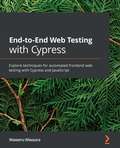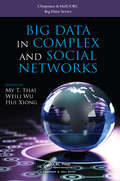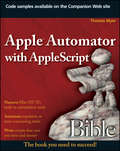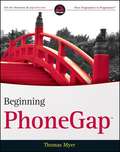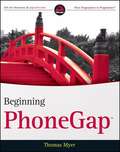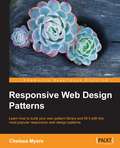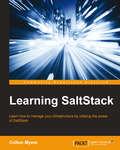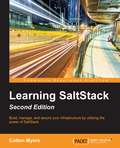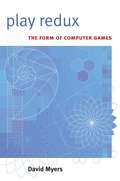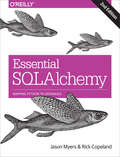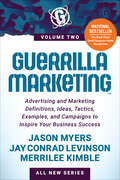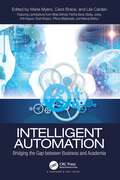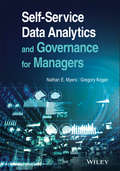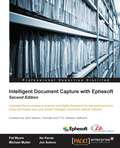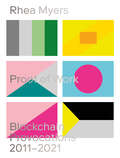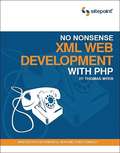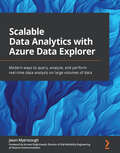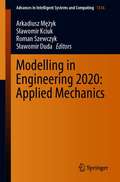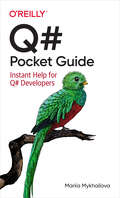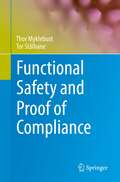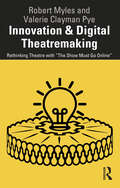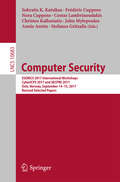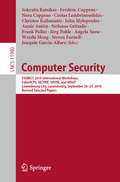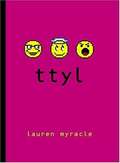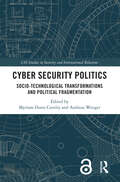- Table View
- List View
End-to-End Web Testing with Cypress: Explore techniques for automated frontend web testing with Cypress and JavaScript
by Waweru MwauraGet to grips with the Cypress framework and learn how to best implement end-to-end automation testing with JavaScript with the help of expert tips, best practices, and real-world testing examplesKey FeaturesWrite your first end-to-end test and find out how to modernize your testing environmentExecute test-driven web development and cross-browser testing using CypressDiscover the advantages of using Cypress over Selenium and refactor testing for modern web appsBook DescriptionCypress is a modern test automation framework for web-based frontend apps. Learning Cypress will help you overcome the shortcomings of conventional testing solutions such as dependency graph problems, the steep learning curve in setting up end-to-end testing packages, and difficulties in writing explicit time waits for your tests. In End-to-End Web Testing with Cypress, you'll learn how to use different Cypress tools, including time travel, snapshots, errors, and console output, to write fail-safe and non-flaky tests. You'll discover techniques for performing test-driven development (TDD) with Cypress and write cross-browser tests for your web applications. As you advance, you'll implement tests for a sample application and work with a variety of tools and features within the Cypress ecosystem. Finally, this Cypress book will help you grasp advanced testing concepts such as visual testing and networking. By the end of this book, you'll have the skills you need to be able to set up Cypress for any web app and understand how to use it to its full potential.What you will learnGet to grips with Cypress and understand its advantages over SeleniumExplore common Cypress commands, tools, and techniques for writing complete tests for web appsSet up and configure Cypress for cross-browser testingUnderstand how to work with elements and animation to write non-flaky testsDiscover techniques for implementing and handling navigation requests in testsImplement visual regression tests with Applitools eyesWho this book is forThis book is for automation testing professionals, software and web testers, and frontend web developers who have intermediate-level JavaScript and beginner-level test automation knowledge, as well as for complete beginners who are looking to get started with Cypress and learn how it works. You'll also find this book useful if you are a Selenium tester who wants to migrate to Cypress and leverage its capabilities. An intermediate-level understanding of JavaScript programming and beginner-level knowledge of web testing are required.
Big Data in Complex and Social Networks (Chapman & Hall/CRC Big Data Series)
by My T. Thai, Weili Wu, Hui XiongThis book presents recent developments on the theoretical, algorithmic, and application aspects of Big Data in Complex and Social Networks. The book consists of four parts, covering a wide range of topics. The first part of the book focuses on data storage and data processing. It explores how the efficient storage of data can fundamentally support intensive data access and queries, which enables sophisticated analysis. It also looks at how data processing and visualization help to communicate information clearly and efficiently. The second part of the book is devoted to the extraction of essential information and the prediction of web content. The book shows how Big Data analysis can be used to understand the interests, location, and search history of users and provide more accurate predictions of User Behavior. The latter two parts of the book cover the protection of privacy and security, and emergent applications of big data and social networks. It analyzes how to model rumor diffusion, identify misinformation from massive data, and design intervention strategies. Applications of big data and social networks in multilayer networks and multiparty systems are also covered in-depth.
Apple Automator with AppleScript Bible
by Thomas MyerOne-stop reference helps you get the most out of AppleScript and AutomatorOne of the handiest ways to streamline your workload is to automate some of your most routine computer tasks. Mac users are lucky in that they have AppleScript and Automator automation tools built right in. This comprehensive guide shows you how to tap both these useful Mac features for Mac OS X and regularly perform such tasks as extracting unread e-mails from your Mail, scheduling workflows, and manually recording actions to create new automated routines.Brings you up to speed on Apple's built-in automation tools for Mac OS X, including a more thorough look at Automator than in many books, and shows you how you can automate many of your most repetitive or error-prone tasksExplains how to automate aspects of some of your favorite Mac features, such as iCal, Mail, iPhoto, iTunes, and iDVDCovers how to manipulate files and folders; work with PDFs, emails, and Web pages; schedule workflows; set up watch folders; create and use variables; manually record actions; and create AppleScripts that further automate functionsThe instruction in this detailed guide will help you increase your productivity using Automator and AppleScript.Note: CD-ROM/DVD and other supplementary materials are not included as part of eBook file.
Beginning PhoneGap
by Thomas MyerIn order for Web developers to create mobile applications, they need to learn new programming languages, which keeps many of them out of the mobile space. PhoneGap comes to the rescue!! It lets web developers mobile applications in languages they already know. In addition, PhoneGap allows for cross-platform development, so they can develop apps for iPhone, Android, and Blackberry! Beginning PhoneGap walks the reader through installing the development software, cover the basics of each of the functional units, and then introduce the reader to various projects they can build with the framework. It features: Using PhoneGap with iPhone, Android, Blackberry Using HTML, CSS, and Javascript Using features Accelerameter, Compass Media, Storage and Files, Camera, Contacts, Geolocation Using HTML, CSS, and Javascript, languages familiar to most web developers, chapters build on each other to create a larger app, so by the end readers can have mobile apps up and running.
Beginning PhoneGap
by Thomas MyerCreate cross-platform mobile apps without having to learn a new language!PhoneGap is an open source solution, ideal for web developers wanting to build cross-platform mobile apps without having to learn a new language. Using HTML, CSS, and Javascript, PhoneGap allows you to jump into the mobile world and develop apps for iPhone, Android, and the BlackBerry.Walks you through installing the development software Covers the basics of each of PhoneGap's functional units Introduces various projects you can build with the framework Discusses using HTML, CSS, JavaScript Explores the features accelerameter and compass Examines media, storage and files, camera, contacts, geolocation, and more Within Beginning PhoneGap, each new chapter builds on the lessons taught in the previous so that by the end of the book, you can have mobile apps up and running!"NOTE: Several significant changes to the PhoneGap software occurred shortly after this book was published. The author has written extra pages to address these and other changes. You can download the updates to this book from the book's support page on the Wrox website."
Responsive Web Design Patterns
by Chelsea MyersLearn how to build your own pattern library and fill it with the most popular responsive web design patterns About This Book * Explore the process of combining responsive patterns together to fit the needs of your own website or project * Organize your projects by creating responsive pattern libraries and manage unruly design systems as they grow * Break down the best responsive websites to their patterns and learn how to build them in your own projects Who This Book Is For This book is intended for HTML and CSS beginners who want to know where to start when creating a responsive website. It is also for more experienced developers who perhaps need a little inspiration for their next project. Knowing what makes a responsive site tick is not enough. You also have to know the best way to design a site that fulfills its required goals, shrinking and stretching to polar sizes all the while. This book aims to equip you with a foundation to do just that. What You Will Learn * Gain knowledge of the pros and cons of popular responsive patterns. * Build each pattern on your own using HTML, CSS, and JavaScript by following examples and guides provided in each chapter * Know how to combine patterns to create unique solutions for your own projects * Understand the benefits of creating a pattern library and learn how to use them efficiently * Pay attention to detail by reviewing commonly forgotten responsive elements such as typography * See real-world examples of these patterns being used by websites like Disney, NASA, and more * Review techniques and best practices when it comes to building responsive websites In Detail Responsive Web Design (RWD) is a web design approach aimed at arranging things in a way to get optimal viewing experience and easy reading and navigation on different screen sizes. It bonds together designers and developers as they publish and test new solutions to build websites for all screen sizes. The simplicity of this technology stems from the fact that learning about the most tested RWD solutions along with basic HTML, CSS, and a bit of JavaScript, can soon help you start using these solutions for yourself. The foundations of RWD, once mastered, will help you gain the skills you need to create your own responsive website. Keep track of Responsive Web Designs (RWD) patterns by building your own pattern library and creating RWD's most popular patterns, seen on hundreds of websites today. For beginners and pros, this book provides a toolset to help plan the design and functionality of a responsive website. The book begins with creating a home for all your patterns by setting up your own pattern library. Each chapter is broken down into different sections of a website; presenting patterns for each section. We move on to building responsive layouts of varying degrees of complexity to house the type of content you need. Develop menu systems and see which responsive navigation fits the size of your website. Next, you'll learn tactics to present media and data elegantly on different screen sizes. And finally, you'll tie up all those loose ends on your responsive website and pattern library to get it ready for launch. Style and approach This book is a collection of favored responsive patterns broken down to be easily understood and recreated. Each chapter focuses on a specific part of a website, from large to small, and shows you the markup and styles behind it. A responsive pattern library accompanies this book that you can download and see the patterns and your code beforehand.
Learning SaltStack
by Colton MyersIf you are a system administrator who manages multiple servers, then you know how difficult it is to keep your infrastructure in line. If you've been searching for an easier way, this book is for you. No prior experience with SaltStack is required.
Learning SaltStack - Second Edition
by Colton MyersBuild, manage, and secure your infrastructure by utilizing the power of SaltStack About This Book * First book in the market to incorporate all the latest features of SaltStack. * Leverage the power of SaltStack for building, managing and securing your infrastructure. * Effectively use commands and control the state of your infrastructure in a jiffy. Who This Book Is For This book is aimed at System Administrators who are looking forward to manage their infrastructure using SaltStack with no prior knowledge about it. What You Will Learn Install Salt on your servers Run commands on all or some of your minions instantly from a central managing server Write custom Salt modules to handle your infrastructure's unique needs Define the state of your infrastructure and use Salt to enforce that state. Create platform-agnostic state definitions for greater flexibility and power Manage virtual servers on public or private clouds using Salt Cloud Use the event system in Salt to create a reactive and self-healing infrastructure In Detail SaltStack is one of the best infrastructure management platforms available. It provides powerful tools for defining and enforcing the state of your infrastructure in a clear, concise way. With this book learn how to use these tools for your own infrastructure by understanding the core pieces of Salt. In this book we will take you from the initial installation of Salt, through running their first commands, and then talk about extending Salt for individual use cases. From there you will explore the state system inside of Salt, learning to define the desired state of our infrastructure in such a way that Salt can enforce that state with a single command. Finally, you will learn about some of the additional tools that salt provides, including salt-cloud, the reactor, and the event system. We?ll finish by exploring how to get involved with salt and what?s new in the salt community. Finally, by the end of the book, you'll be able to build a reliable, scalable, secure, high-performance infrastructure and fully utilize the power of cloud computing. Style and approach This will be a comprehensive guide on SaltStack along with installation and setting up of Salt on couple of platforms. Then enlightening the readers about remote execution system and configuration management system and ending with concepts of security and best practices.
Play Redux: The Form of Computer Games
by David MyersA new look at digital gaming and the aesthetics of play
Essential SQLAlchemy: Mapping Python to Databases
by Jason Myers Rick CopelandDive into SQLAlchemy, the popular, open-source code library that helps Python programmers work with relational databases such as Oracle, MySQL, PostgresSQL, and SQLite. Using real-world examples, this practical guide shows you how to build a simple database application with SQLAlchemy, and how to connect to multiple databases simultaneously with the same metadata.SQL is a powerful language for querying and manipulating data, but it’s tough to integrate it with your application. SQLAlchemy helps you map Python objects to database tables without substantially changing your existing Python code. If you’re an intermediate Python developer with knowledge of basic SQL syntax and relational theory, this book serves as both a learning tool and a handy reference.Essential SQLAlchemy includes several sections:SQLAlchemy Core: Provide database services to your applications in a Pythonic way with the SQL Expression LanguageSQLAlchemy ORM: Use the object relational mapper to bind database schema and operations to data objects in your applicationAlembic: Use this lightweight database migration tool to handle changes to the database as your application evolvesCookbook: Learn how to use SQLAlchemy with web frameworks like Flask and libraries like SQLAcodegen
Guerrilla Marketing: Advertising and Marketing Definitions, Ideas, Tactics, Examples, and Campaigns to Inspire Your Business Success
by Jason Myers Jay Conrad Levinson Merrilee KimbleFocused on low-cost, strategic marketing concepts that will creatively promote a compelling product or service, Guerrilla Marketing’s winning approach relies on knowledge, time, energy, and imagination rather than a big marketing budget. Now, the winning continues with Guerrilla Marketing Volume 2.
Intelligent Automation: Bridging the Gap between Business and Academia
by Marie Myers Carol Brace Lila CardenSince prehistoric times, humans have invented ways to simplify daily activities to improve productivity. The most recent milestone in this journey is robotic process automation (RPA), helping to build software robots that can be leveraged to automate mundane and repetitive tasks that can be labor-intensive and prone to errors. In recent years, RPA has been integrated with emerging artificial intelligence (AI) and machine learning (ML) technologies to create what is referred to as intelligent automation (IA), emulating human actions and decision-making abilities. This book addresses the critical questions about the rise, usage, and future of IA practices. This book is structured by general personas considered as its primary target audience, ranging from: Early-stage practitioners seeking to learn effective management of IA programs Established IA practitioners seeking to drive maturity and scale Business leaders seeking to understand how to drive business value using IA Practitioners or academicians seeking to collaborate This book is strongly recommended for practitioners seeking to plan, implement, and scale IA practices in their organization and for researchers and students who intend to study strategy, implementation, and management of IA practice to accelerate the digital transformation agenda.
Self-Service Data Analytics and Governance for Managers
by Nathan E. Myers Gregory KoganProject governance, investment governance, and risk governance precepts are woven together in Self-Service Data Analytics and Governance for Managers, equipping managers to structure the inevitable chaos that can result as end-users take matters into their own hands Motivated by the promise of control and efficiency benefits, the widespread adoption of data analytics tools has created a new fast-moving environment of digital transformation in the finance, accounting, and operations world, where entire functions spend their days processing in spreadsheets. With the decentralization of application development as users perform their own analysis on data sets and automate spreadsheet processing without the involvement of IT, governance must be revisited to maintain process control in the new environment. In this book, emergent technologies that have given rise to data analytics and which form the evolving backdrop for digital transformation are introduced and explained, and prominent data analytics tools and capabilities will be demonstrated based on real world scenarios. The authors will provide a much-needed process discovery methodology describing how to survey the processing landscape to identify opportunities to deploy these capabilities. Perhaps most importantly, the authors will digest the mature existing data governance, IT governance, and model governance frameworks, but demonstrate that they do not comprehensively cover the full suite of data analytics builds, leaving a considerable governance gap. This book is meant to fill the gap and provide the reader with a fit-for-purpose and actionable governance framework to protect the value created by analytics deployment at scale. Project governance, investment governance, and risk governance precepts will be woven together to equip managers to structure the inevitable chaos that can result as end-users take matters into their own hands.
Intelligent Document Capture with Ephesoft - Second Edition
by Pat Myers Ike KavasAutomate the processing of scanned and digital documents by improving accuracy using web-based open and modern intelligent document capture software About This Book * Learn how to implement the benefits of intelligent document capture using Ephesoft Enterprise 4 * Leverage the power of the open platform to run it as a classic intake capture system to make your current portals or applications more intelligent * A practical guide providing examples for optimizing document capture for your business Who This Book Is For This book is intended for information technology professionals interested in installing and configuring Ephesoft Enterprise for their organization, but it is a valuable resource for anyone interested in learning about intelligent document capture. What You Will Learn * Discover the benefits of using intelligent document capture in your work place * Learn to capture, classify, and separate any type of document * Extract important information from your documents * Transfer the documents and data into your content management system * Customize Ephesoft to meet your unique business requirements * Understand the integration techniques using the Ephesoft web services API * Convert your paper archive to electronic records efficiently * Automate business processes that depend on documents in paper, fax, or email attachment format * Implement distributed capture for mailroom automation In Detail Every organization, public or private, processes documents in various formats, especially paper and fax formats. Processing documents manually is an expensive and time-consuming endeavor. Ephesoft Enterprise is a modern document capture solution that allows an organization to automate the business process. It uses powerful technology to classify and capture the vital information from the document's content. This helps to minimize the time your company spends on reviewing and processing any physical and electronic documents. This book teaches you about document capture in general and implementation of document capture using Ephesoft. Start by learning about document capture and how Ephesoft revolutionized the industry. Progress to a tour of key features, including operator and administrator interfaces and then learn to configure Ephesoft to process your business's specific document types and extract content from those documents. You will also get to know the advanced customization techniques that make Ephesoft accommodate your unique business needs. Finally, the book concludes by teaching you how to embed the classification and extraction functionality using Ephesoft's web services. By the end, you will learn to optimize the processing of your documents, saving your company time and money. Style and approach This is a step-by-step guide on how to configure and use Ephesoft using an accounts payable use case. The book will start with basic techniques and progress to more advanced features that allow you to leverage the power for a modern powerful capture system.
Proof of Work: Blockchain Provocations 20112021 (Urbanomic / Art Editions)
by Rhea MyersA beautifully produced anthology of crypto-artist, writer, and hacker Rhea Myers's pioneering blockchain art, along with a selection of her essays, reviews, and fictions.DAO? BTC? NFT? ETH? ART? WTF? HODL as OG crypto-artist, writer, and hacker Rhea Myers searches for faces in cryptographic hashes, follows a day in the life of a young shibe in the year 2032, and patiently explains why all art should be destructively uploaded to the blockchain. Now an acknowledged pioneer whose work has graced the auction room at Sotheby&’s, Myers embarked on her first art projects focusing on blockchain tech in 2011, making her one of the first artists to engage in creative, speculative, and conceptual engagements with "the new internet." Proof of Work brings together annotated presentations of Myers&’s blockchain artworks along with her essays, reviews, and fictions—a sustained critical encounter between the cultures and histories of the artworld and crypto-utopianism, technically accomplished but always generously demystifying and often mischievous. Her deep understanding of the technical history and debates around blockchain technology is complemented by a broader sense of the crypto movement and the artistic and political sensibilities that accompanied its ascendancy. Remodeling the tropes of conceptual art and net.art to explore what blockchain technology reveals about our concepts of value, culture, and currency, Myers&’s work has become required viewing for anyone interested in the future of art, consensus, law, and collectivity.
No Nonsense XML Web Development With PHP
by Thomas M. MyersA practical and concise book that teaches XML from the ground up. This tutorial style presents various XML methodologies and techniques in an easy to understand way, building a basis for further exploration. XML is essentially an enabling technology, dry and boring on its own. As a result, most books on the market are dry, and academic in nature teaching theory rather than practice. This book actually teaches practical, real-world applications of XML, using the very latest version of PHP (PHP 5) as the base language. No Nonsense XML Web Development with PHP explains how XML can be put to use in real-world projects. The book also covers buzz topics such as RSS and Web Services.
Scalable Data Analytics with Azure Data Explorer: Modern ways to query, analyze, and perform real-time data analysis on large volumes of data
by Jason Myerscough Arunee SinghchawlaWrite efficient and powerful KQL queries to query and visualize your data and implement best practices to improve KQL execution performanceKey FeaturesApply Azure Data Explorer best practices to manage your data at scale and reduce KQL execution timeDiscover how to query and visualize your data using the powerful KQLManage cluster performance and monthly costs by understanding how to size your ADX cluster correctlyBook DescriptionAzure Data Explorer (ADX) enables developers and data scientists to make data-driven business decisions. This book will help you rapidly explore and query your data at scale and secure your ADX clusters.The book begins by introducing you to ADX, its architecture, core features, and benefits. You'll learn how to securely deploy ADX instances and navigate through the ADX Web UI, cover data ingestion, and discover how to query and visualize your data using the powerful Kusto Query Language (KQL). Next, you'll get to grips with KQL operators and functions to efficiently query and explore your data, as well as perform time series analysis and search for anomalies and trends in your data. As you progress through the chapters, you'll explore advanced ADX topics, including deploying your ADX instances using Infrastructure as Code (IaC). The book also shows you how to manage your cluster performance and monthly ADX costs by handling cluster scaling and data retention periods. Finally, you'll understand how to secure your ADX environment by restricting access with best practices for improving your KQL query performance.By the end of this Azure book, you'll be able to securely deploy your own ADX instance, ingest data from multiple sources, rapidly query your data, and produce reports with KQL and Power BI.What you will learnBecome well-versed with the core features of the Azure Data Explorer architectureDiscover how ADX can help manage your data at scale on AzureGet to grips with deploying your ADX environment and ingesting and analyzing your dataExplore KQL and learn how to query your dataQuery and visualize your data using the ADX UI and Power BIIngest structured and unstructured data types from an array of sourcesUnderstand how to deploy, scale, secure, and manage ADXWho this book is forThis book is for data analysts, data engineers, and data scientists who are responsible for analyzing and querying their team's large volumes of data on Azure. SRE and DevOps engineers who deploy, maintain, and secure infrastructure will also find this book useful. Prior knowledge of Azure and basic data querying will help you to get the most out of this book.
Modelling in Engineering 2020: Applied Mechanics (Advances in Intelligent Systems and Computing #1336)
by Arkadiusz Mężyk Sławomir Kciuk Roman Szewczyk Sławomir DudaThis book includes the outcomes of the 59th Symposium “Modelowanie w Mechanice” (Engineering Modelling in Mechanics) held in Ustroń from 22 February to 26 February 2020. The International Conference has an over 58-year-old history and is organized by the Department of Theoretical and Applied Mechanics of Silesian University of Technology under the patronage of the Polish Society of Theoretical and Applied Mechanics, Gliwice Branch.Subjects of the conference are modelling of mechatronic systems, machinery dynamics, control systems, sensitivity analysis and optimization, numerical modelling and experimental methods in mechanics, biomechanics, heat flow analysis, fluid mechanics, etc. The papers are dealing with interdisciplinary problems in which mechanical phenomena are of decisive importance.The potential reader of this book will find their set of papers concentrated on the use of computer-aided design, virtual modelling, numerical simulations, fast prototyping and experimental tests of mechanical systems. It is an area of versatile and interdisciplinary research trends with one of the mainstreams focusing on applied mechanics.
Q# Pocket Guide
by Mariia MykhailovaReady to build quantum computing applications using Q# and the Microsoft Quantum Development Kit? This is the book for you. Q# is a domain-specific language for expressing quantum algorithms that combines familiar "classical" language constructs with quantum-specific ones. Ideal for any developer familiar with (or willing to learn) the basics of quantum computing and looking to get started with quantum programming, this pocket guide quickly helps you find syntax and usage information for unfamiliar aspects of Q#.You'll explore the quantum software development lifecycle from implementing the program to running it on quantum simulators to testing and debugging it. You'll learn to use the tools provided by Microsoft's Quantum Development Kit for each step of the process.You'll explore:Q# language details, including data types, statements, and operatorsGuidelines for organizing Q# code and invoking it from different environmentsInformation on simulators and tools in the Microsoft Quantum Development KitAdvice on testing and debugging tools and techniques for quantum programs
Functional Safety and Proof of Compliance
by Thor Myklebust Tor StålhaneThis book aims to facilitate and improve development work related to all documents and information required by functional safety standards. Proof of Compliance (PoC) is important for the assessor and certification bodies when called up to confirm that the manufacturer has developed a software system according to the required safety standards. While PoC documents add functionality to the product neither for the developer nor for the customer, they do add confidence and trust to the product and ease certification, and as such are important for the product’s value. In spite of this added value, the documentation needed for PoC is often developed late in the project and in a haphazard manner. This book aims at developers, assessors, certification bodies, and purchasers of safety instrumented systems and informs the reader about the most important PoC documents. A typical PoC documentation encompasses 50 to 200 documents, several of which are named in the safety standards (e.g., 82 documents in IEC 61508:2010 series, 101 documents in EN 5012X series and 106 work products in ISO 26262:2018 series). These documents also include further references, typically one to twenty of them, and the total number of pages developed by the manufacturer varies between 2000 and 10000 pages. The book provides guidance and examples what to include in the relevant plans and documents.
Innovation & Digital Theatremaking: Rethinking Theatre with “The Show Must Go Online”
by Robert Myles Valerie Clayman PyeInnovation & Digital Theatremaking introduces a blueprint for how to think differently about Theatre, how to respond creatively in uncertainty, and how to wield whatever resources are available to create new work in new ways. In 2020, the COVID-19 pandemic had a colossal impact on theatre across the world. At a time when even the wealthiest and best-supported theatre companies in the world ceased all operations and shuttered their stages, the theatre company The Show Must Go Online (TSMGO) forged its way into a new frontier: the highly accessible digital landscape of online performance. In this book, TSMGO creator Robert Myles and Valerie Clayman Pye explore the success of TSMGO from a practical standpoint, offering insights and strategies that can help theatremakers at every level respond proactively to the future of Theatre in the digital era. Each chapter addresses a different aspect of the creative process and concludes with take-homes so readers can learn how to innovate rapidly, undertake research and development in order to create their own models, and cultivate their own theatrical communities. Written for theatremakers, directors, producers, and creatives of all levels of experience, this book will help readers to think critically and creatively about theatre and theatre pedagogues to understand how to train their students for the theatre of the future.
Computer Security: ESORICS 2017 International Workshops, CyberICPS 2017 and SECPRE 2017, Oslo, Norway, September 14-15, 2017, Revised Selected Papers (Lecture Notes in Computer Science #10683)
by John Mylopoulos Frédéric Cuppens Costas Lambrinoudakis Sokratis K. Katsikas Nora Cuppens Christos Kalloniatis Annie Antón Stefanos GritzalisIn this e-book, authors address aspects of security and privacy issues of IT outsourcing. Paper 1 describes the fundamental aspects of IS/IT security outsourcing and introduces the specific organizational, technical and legal issues that should be considered for making an outsourcing arrangement. It also examines privacy issues and suggests how outsourcing arrangements can comply with these requirements. Paper 2 describes a process for outsourcing a security information management platform. Paper 3 discusses the problems of client-generated digital signatures and proposes a framework for outsourcing digital signatures to a Trusted Third Party.
Computer Security: ESORICS 2019 International Workshops, CyberICPS, SECPRE, SPOSE, and ADIoT, Luxembourg City, Luxembourg, September 26–27, 2019 Revised Selected Papers (Lecture Notes in Computer Science #11980)
by John Mylopoulos Steven Furnell Frédéric Cuppens Sokratis Katsikas Costas Lambrinoudakis Joaquin Garcia-Alfaro Nora Cuppens Christos Kalloniatis Annie Antón Stefanos Gritzalis Weizhi Meng Frank Pallas Jörg Pohle Angela SasseThis book constitutes the refereed post-conference proceedings of the 5th International Workshop on Security of Industrial Control Systems and Cyber-Physical Systems, CyberICPS 2019, the Third International Workshop on Security and Privacy Requirements Engineering, SECPRE 2019, the First International Workshop on Security, Privacy, Organizations, and Systems Engineering, SPOSE 2019, and the Second International Workshop on Attacks and Defenses for Internet-of-Things, ADIoT 2019, held in Luxembourg City, Luxembourg, in September 2019, in conjunction with the 24th European Symposium on Research in Computer Security, ESORICS 2019. The CyberICPS Workshop received 13 submissions from which 5 full papers and 2 short papers were selected for presentation. They cover topics related to threats, vulnerabilities and risks that cyber-physical systems and industrial control systems face; cyber attacks that may be launched against such systems; and ways of detecting and responding to such attacks. From the SECPRE Workshop 9 full papers out of 14 submissions are included. The selected papers deal with aspects of security and privacy requirements assurance and evaluation; and security requirements elicitation and modelling and to GDPR compliance. The SPOSE Workshop received 7 submissions from which 3 full papers and 1 demo paper were accepted for publication. They demonstrate the possible spectrum for fruitful research at the intersection of security, privacy, organizational science, and systems engineering.From the ADIoT Workshop 5 full papers and 2 short papers out of 16 submissions are included. The papers focus on IoT attacks and defenses and discuss either practical or theoretical solutions to identify IoT vulnerabilities and IoT security mechanisms.
TTYL (Internet Girls #1)
by Lauren MyracleThis book chronicles, in "instant message" format, the day-to-day experiences, feelings, and plans of three friends, Zoe, Maddie, and Angela, as they begin tenth grade.
Cyber Security Politics: Socio-Technological Transformations and Political Fragmentation (CSS Studies in Security and International Relations)
by Myriam Dunn Cavelty and Andreas WengerThis book examines new and challenging political aspects of cyber security and presents it as an issue defined by socio-technological uncertainty and political fragmentation. Structured along two broad themes and providing empirical examples for how socio-technical changes and political responses interact, the first part of the book looks at the current use of cyber space in conflictual settings, while the second focuses on political responses by state and non-state actors in an environment defined by uncertainties. Within this, it highlights four key debates that encapsulate the complexities and paradoxes of cyber security politics from a Western perspective – how much political influence states can achieve via cyber operations and what context factors condition the (limited) strategic utility of such operations; the role of emerging digital technologies and how the dynamics of the tech innovation process reinforce the fragmentation of the governance space; how states attempt to uphold stability in cyberspace and, more generally, in their strategic relations; and how the shared responsibility of state, economy, and society for cyber security continues to be re-negotiated in an increasingly trans-sectoral and transnational governance space. This book will be of much interest to students of cyber security, global governance, technology studies, and international relations.
